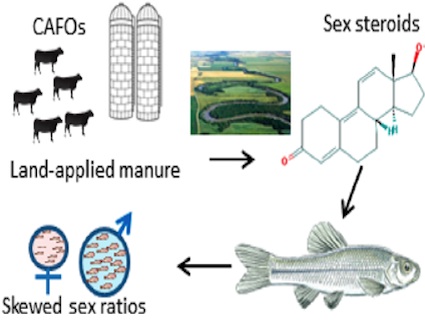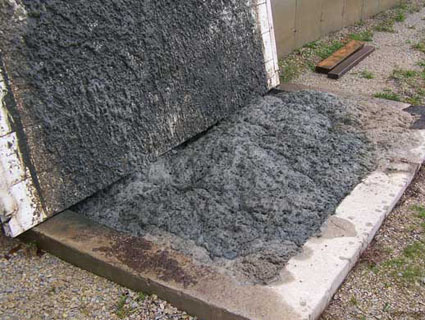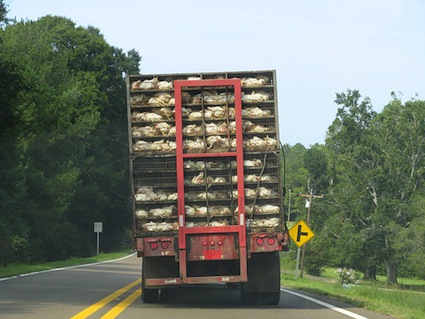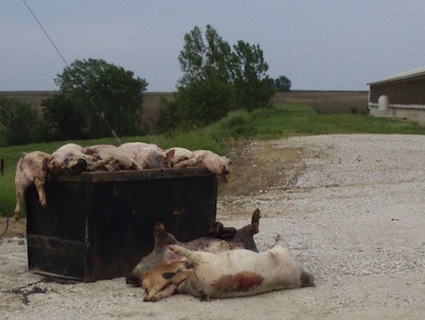
Dead hogs outside an Iowa hog confinement. Iowa Citizens for Community Improvement
In a river that flows through Shanghai, Chinese officials have pulled 6,000 dead pigs from the water, CNN reported. The situation is undeniably grotesque: “Sanitation workers, clad in masks and plastic suits, have been fishing the bruised pig bodies surfacing in the Huangpu River. The pink, decomposing blobs have wreaked foul odors and alarmed residents.”
According to CNN, the corpses began turning up in the river after a government crackdown on the selling of meat from diseased pigs. In a bind, farmers sought a riparian solution to the problem of disposing them. Gross.
China’s pig-dumping scandal must be seen the context of the nation’s rapidly industrializing hog-production system—as this 2011 Institute for Agriculture and Trade Policy report shows, national policy is driving a lightning-fast switch from backyard hog production to vast US-style hog factories. (And now poultry production is following suit.)
But as China reshapes its meat production in our image, we have no standing to feel superior when scandals like the current one in Shanghai’s hinterland erupt. That’s because we don’t do a very good job of protecting our waterways from the hog industry, either. Consider Iowa, which houses around 18 million hogs, making it our most hog-intensive state. All of those hogs concentrated into a relatively small space generate unthinkable amounts of toxic manure. How much? Food & Water Watch weighs in:
• The nearly 733,000 hogs on factory farms in Plymouth County, Iowa, produce twice as much untreated manure as the sewage from the Dallas-Fort Worth metro area.
• The more than 857,000 hogs on factory farms in Hardin County, Iowa, produce three times as much untreated manure as the sewage from the greater Atlanta metro area.
• The more than 1 million hogs on factory farms in Sioux County, Iowa, produce as much untreated manure as the sewage from the Los Angeles and Atlanta metro areas combined.
And it’s not just hogs that are crammed into the state’s factory farms. According to FWW, Iowa’s vast confinement facilities also house 1.2 million beef cattle, 52.4 million egg-laying hens, 1 million broiler chickens, and 64,500 dairy cows. Altogether, this teeming horde annually churns out “as much untreated manure as the sewage from 471 million people—more than the entire US population.”
As you might imagine, keeping such titanic amounts of shit out of water is a near futile task. There are occasional spectacular incidents—FWW points to the time in 2008 when spring floods “destroyed at least 3 hog factory farms near Oakville, drowned up to 1,500 hogs and flooded manure from storage pits downstream into waterways throughout eastern Iowa.” And according to the Iowa Citizens for Community Improvement, a group that fights factory farming in Iowa, there have been more than 800 documented in Iowa since 1995.
And then there’s more routine water degradation. The ICCI put together this chart showing the number of “impaired waterways” in the state over the past decade, using data from the state’s Department of Natural Resources. The Iowa DNR considers a lake, stream, or reviver “impaired” if its water quality “prevents it from fully meeting its designated use,” which ranges from recreation to drinking.

Now, all of this degradation can’t be laid at the feet of livestock farms—Iowa also has massive amounts of corn farming, which also results in leaching of algae-causing nitrogen and phosphorus. But farming hog has scaled up over the same time frame.
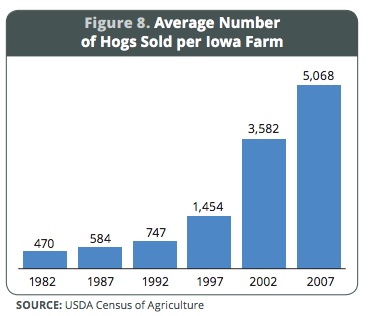
Meanwhile, budget cuts have forced the Department of Natural Resources to scale down its staff devoted to overseeing factory farms.

So, yes, China waterlogged-hog scandal is pretty gross—but so is US-style factory hog farming in general.

